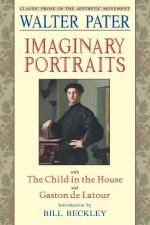|
This section contains 13,466 words (approx. 45 pages at 300 words per page) |

|
SOURCE: “Pater's Apprenticeship in Critical Prose” in Walter Pater: The Critic as Artist of Ideas, New York University Press, 1987, pp. 1-35.
In the following excerpt, Buckler traces Pater's aesthetic development as evidenced in his works.
That Walter Pater is our premier exponent and exemplar of aestheticism has long been generally accepted. In the climactic words of Iain Fletcher, Pater “created himself for us in his oeuvre as a permanently significant symbolical figure: the most complete example, the least trivial, of the aesthetic man.”1 What has not been so readily perceived even by some who have written about him with sympathy and insight is that he is much more than that—that in Pater's handling of the subject art becomes as large as human life is in itself capable of being. Pater did not, like some of his more flamboyant disciples, leap prematurely to an art-for-art's-sake creed and then...
|
This section contains 13,466 words (approx. 45 pages at 300 words per page) |

|


